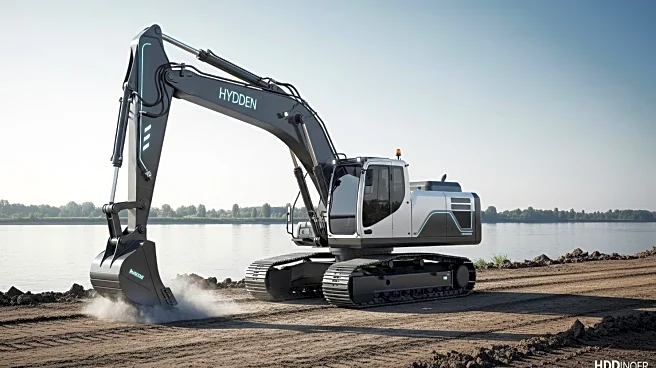What is the story about?
What's Happening?
Skanska has deployed a hydrogen-powered digger in the Lower Thames Crossing project, marking a world-first live deployment outside a test environment. The digger, built by JCB and supplied by Flannery Plant Hire, operates on hydrogen instead of diesel, contributing to the project's goal of achieving carbon neutrality in construction. National Highways, the client for the crossing, aims to reduce emissions by 70% during construction and offset remaining carbon by the early 2030s. The project, which received planning consent in March, involves creating a 23km road and tunnel between Essex and Kent, doubling road capacity across the Thames east of London. Construction is expected to begin in 2026, subject to funding, with plans to eliminate diesel from worksites by 2027.
Why It's Important?
The deployment of hydrogen-powered machinery in the Lower Thames Crossing project represents a significant step towards sustainable construction practices. By aiming for carbon neutrality, the project sets a precedent for future infrastructure developments in the UK and potentially worldwide. The use of hydrogen and electric-powered equipment, along with low-carbon materials, could lead to reduced environmental impact and promote biodiversity. This initiative aligns with broader industry goals to achieve net-zero emissions, which is crucial for combating climate change and fostering a sustainable economy.
What's Next?
The project team plans to award the largest green hydrogen supply contract in UK construction history, further supporting the transition to sustainable energy sources. As construction progresses, stakeholders will likely monitor the project's environmental impact and carbon reduction achievements. The success of this initiative could influence policy decisions and encourage other infrastructure projects to adopt similar sustainable practices.
Beyond the Headlines
The commitment to creating six times more green space than road, including new woodlands and parks, highlights the project's focus on enhancing local biodiversity. This approach not only mitigates environmental impact but also improves community spaces, potentially increasing public support for the project. The integration of sustainable practices in construction could lead to long-term shifts in industry standards, promoting innovation and environmental responsibility.
AI Generated Content
Do you find this article useful?















